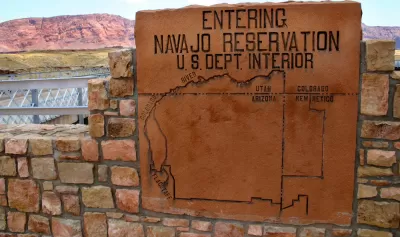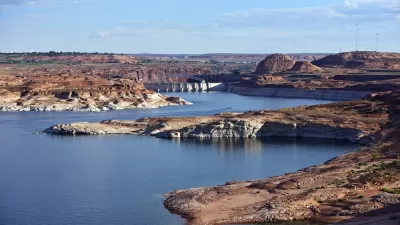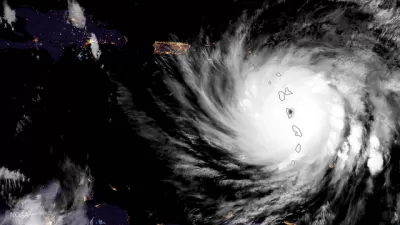On May 24, the Navajo Nation had 4,658 reported cases and 165 deaths in a population of 173,000—more even than New York City—while local organizers scrambled to find the water to cover the need during the pandemic.

Heather Hansman reports on the pre-existing public health crisis that has exacerbated the Covid-19 pandemic on Navajo lands that spans the Four Corners region of the Southwest United States, where the Navajo Nation is experiencing the highest rates of infection in the country.
Hansmen ties access to water in the Navajo Nation to the tragic outcomes of the COVID-19 public health crisis, and a long-standing history of neglect:
The Navajo Nation is particularly vulnerable to the coronavirus because it lacks sufficient resources and infrastructure that most of the U.S. takes for granted: roads, electricity, internet to help spread public-health information, and hospitals. The crisis has been exacerbated by tight living quarters, and there are high rates of health issues, like asthma, cancer, and cardiovascular disease, among residents. All of those problems are tied on some level to federal neglect or exclusion from resources and stalled or missing funding. Most recently, $600 million in COVID-19 relief aid was delayed by more than a month; the money finally arrived in early May.
Hansen details that history of neglect for the water infrastructure of the Navajo Nation from the U.S. Constitution through the 1908 Winters Doctrine to the Colorado River Compact to the 1920s and finally to the CARES Act of 2020, but the water supply crisis facing the Navajo Nation is not isolated to the Four Corners region. According to Hansmen, "there are currently 574 federally recognized tribes in the U.S., and as of 2019, only 40 of them have reached water-rights settlements with the government."
Cindy Howe, the primary source in the article and a project manager for the Navajo Water Project, offers several prescriptions for the crisis: additional central water collection locations, bigger storage tanks, and universal access to running water.
FULL STORY: How a Lack of Water Fueled COVID-19 in Navajo Nation

Alabama: Trump Terminates Settlements for Black Communities Harmed By Raw Sewage
Trump deemed the landmark civil rights agreement “illegal DEI and environmental justice policy.”

Planetizen Federal Action Tracker
A weekly monitor of how Trump’s orders and actions are impacting planners and planning in America.

The 120 Year Old Tiny Home Villages That Sheltered San Francisco’s Earthquake Refugees
More than a century ago, San Francisco mobilized to house thousands of residents displaced by the 1906 earthquake. Could their strategy offer a model for the present?

Ken Jennings Launches Transit Web Series
The Jeopardy champ wants you to ride public transit.

BLM To Rescind Public Lands Rule
The change will downgrade conservation, once again putting federal land at risk for mining and other extractive uses.

Indy Neighborhood Group Builds Temporary Multi-Use Path
Community members, aided in part by funding from the city, repurposed a vehicle lane to create a protected bike and pedestrian path for the summer season.
Urban Design for Planners 1: Software Tools
This six-course series explores essential urban design concepts using open source software and equips planners with the tools they need to participate fully in the urban design process.
Planning for Universal Design
Learn the tools for implementing Universal Design in planning regulations.
Clanton & Associates, Inc.
Jessamine County Fiscal Court
Institute for Housing and Urban Development Studies (IHS)
City of Grandview
Harvard GSD Executive Education
Toledo-Lucas County Plan Commissions
Salt Lake City
NYU Wagner Graduate School of Public Service





























